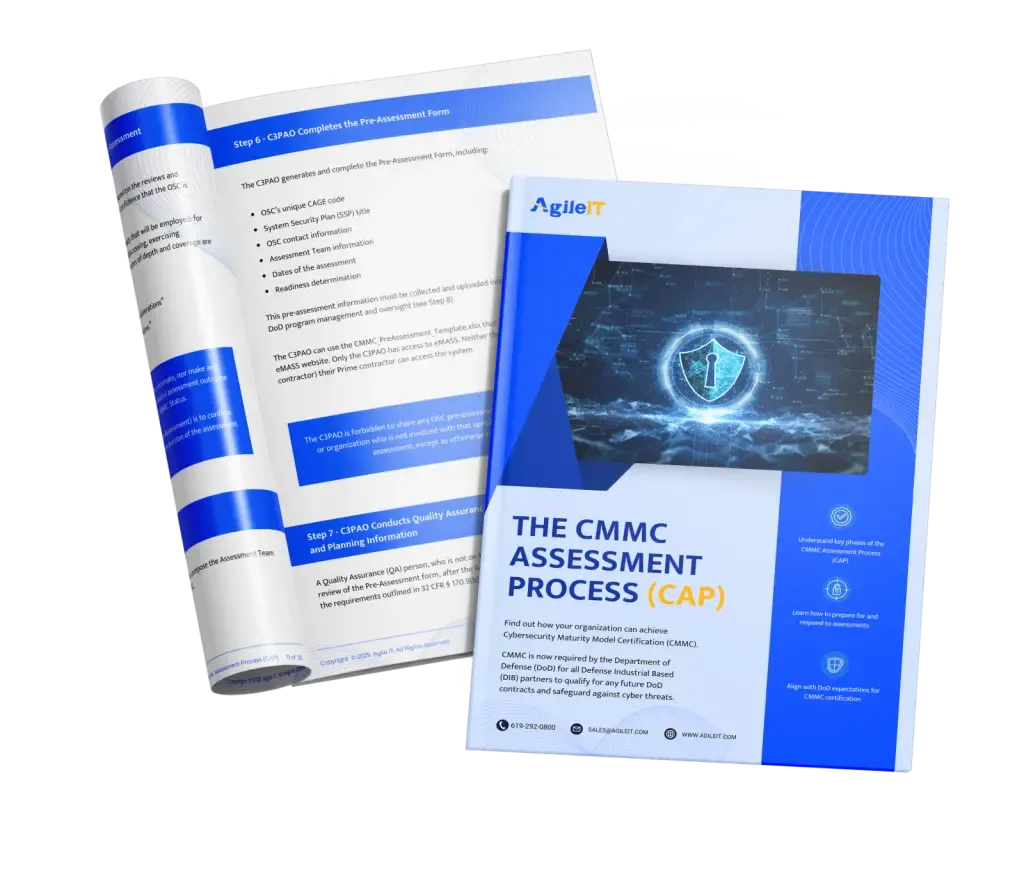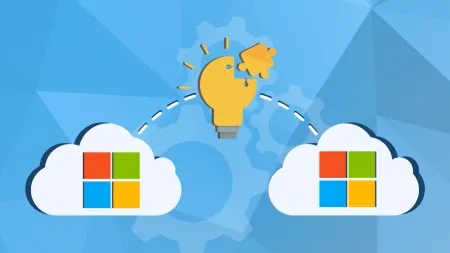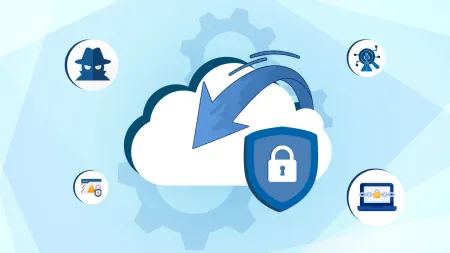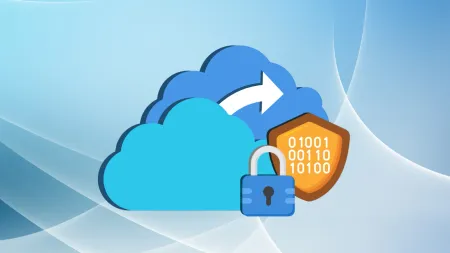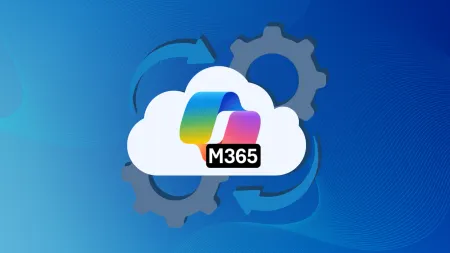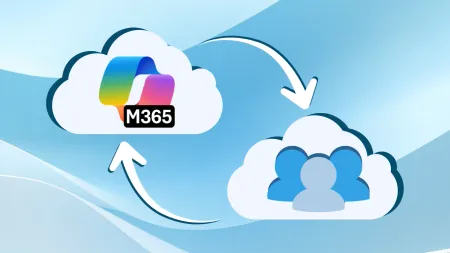Implementing Cybersecurity Policies for CMMC Compliance and Managing CUI
CMMC compliance requires well-documented cybersecurity policies. Learn how to implement security controls, create an SSP and POA&M, and manage Controlled Unclassified Information (CUI).
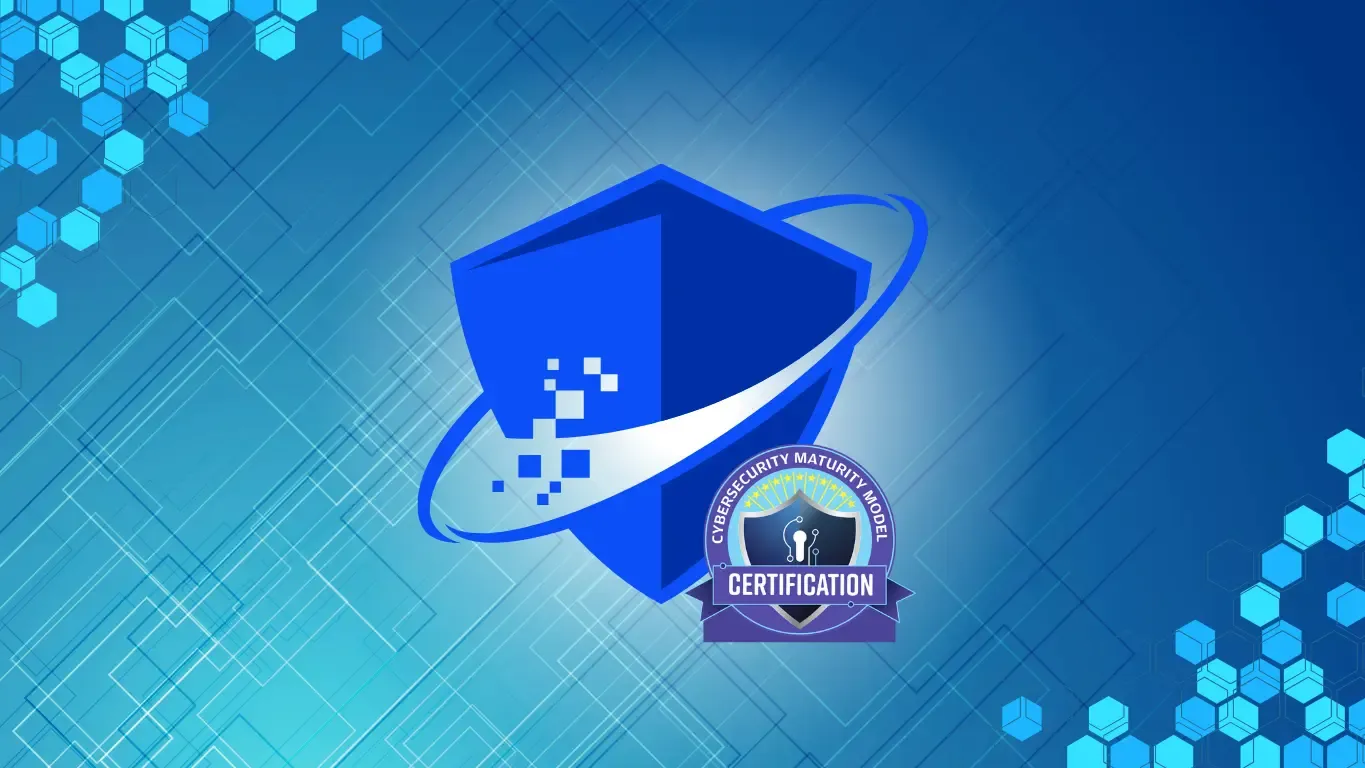
How to Implement Cybersecurity Policies for CMMC Compliance
Cybersecurity Maturity Model Certification (CMMC) compliance is an important part of working as a Department of Defense (DoD) contractor or subcontractor. Cybersecurity threats are continuously growing more sophisticated. In response, the DoD has elevated the standard for the security protocols that protect Controlled Unclassified Information (CUI). In this post, you’ll learn how to implement cybersecurity policies for CMMC compliance
Understanding CMMC Security Requirements
CMMC compliance operates across three levels. Each of these levels expands upon the previous.
- Level 1: Covers basic cyber hygiene and safeguarding of Federal Contract Information (FCI).
- Level 2: Aligns with the 110 security requirements of NIST SP 800-171 and protects CUI.
- Level 3: Adds advanced security practices to counter Advanced Persistent Threats (APTs).
The first step to aligning your cybersecurity policies with CMMC requirements is to understand which level applies to your organization. This will depend on the contracts you currently hold or intend to pursue. The level needed will determine the scope and depth required for your cybersecurity program.
Making this determination accurately keeps your organization out of legal trouble. That’s why many contractors rely on advisory services like AgileThrive that provide expert guidance on how to interpret requirements and on developing compliance strategies tailored to your specific business needs.
One of the next steps is defining clear CMMC roles and responsibilities within your organization. This begins with assigning a dedicated individual to oversee the entire program and another for maintaining and securing the systems and tools that support the program. Accountability networks also need to be put in place for all employees who handle or have access to sensitive information.
Creating a System Security Plan (SSP) for CMMC Certification
A System Security Plan (SSP) is a foundational part of your CMMC compliance efforts. This document is intended to comprehensively describe your business’s systems, security controls, and implementation status.
What is an SSP?
An SSP is a formal document that outlines key parts of your security plan. It covers aspects like security controls, network architecture, system boundaries, and security policies. The SSP serves the dual purpose of providing a roadmap for security implementation as well as evidence of compliance for assessors.
Key Components of an Effective SSP
An effective SSP is a complete SSP. Yours should include the following at a minimum:
- IT Asset Inventory: A complete list of systems, applications, and devices used to process CUI.
- System Boundaries: Clear definitions of what’s inside and outside your in-scope environment.
- Security Controls Implementation: Descriptions of how all applicable NIST SP 800-171 requirements are addressed.
- Access Control Policies: Documentation of how you handle identity management, including privilege management and least privilege principles.
- Network Architecture: Diagrams or descriptions showing how systems are interconnected, including segmentation between CUI and non-CUI environments.
- Roles and Responsibilities: Clear documentation of who is responsible for implementing and maintaining each security control.
- Risk Assessment Summary: A snapshot of the current threat landscape and how identified risks are being mitigated.
- Plan of Action and Milestones (POA&M): A living document outlining gaps, planned remediation actions, and timelines.
Review your SSP periodically to ensure that it reflects current practices and is updated to include any new best practices or requirements.
How to Develop a Plan of Action and Milestones (POA&M) for CMMC
Developing a Plan of Action and Milestones (POA&M) is the most effective way to identify and close security gaps, as well as plan for remediation should threats arise.
What is a POA&M?
A POA&M is a document that identifies security gaps, outlines remediation plans, and assigns security responsibilities. For any missing security controls, the document also establishes timelines for their implementation.
Creating an Effective POA&M
The steps below provide the essentials of an effective POA&M:
- Identify non-compliant security controls through gap assessments or security audits.
- Prioritize findings based on risk level and impact on your CMMC certification efforts.
- Assign specific remediation actions with clear timelines and responsible parties.
- Establish tracking mechanisms to monitor progress toward resolution.
- Regularly review and update the POA&M as items are completed, or new issues are discovered.
Documenting Processes for CMMC Compliance Audits
When assessors audit your security practices, they need evidence that security controls are implemented throughout your business. Simply having them on a planning document isn’t enough. To increase the chance of passing the assessment, it’s vital that you properly document your processes to provide an audit trail for the assessors.
Basic Documentation needed for CMMC Audits
- Security Policies and Procedures: Documents covering incident response, access control, configuration management, risk management, and other security domains.
- Security Training Records: Evidence of basic security training for all employees and specialized training for those who have security responsibilities.
- Continuous Monitoring Logs System logs, vulnerability scan results, and other evidence showing that your business has ongoing security monitoring.
- Change Management Records: Documentation of approved and completed changes to systems and applications, especially those handling CUI.
Tips for Managing Controlled Unclassified Information (CUI) in CMMC
The goal of CMMC requirements is to protect CUI. The best practices below will aid you in doing so effectively.
Encryption Standards
From storage to transmission, CUI should be encrypted at all times using FIPS 140-2 validated encryption. This typically means TLS 1.2 for data in transit and AES-256 for data at rest. Virtual Private Networks (VPNs) provide additional security for workers who need remote access.
Zero Trust Security Model
Trust is the cornerstone of any great team—and you’ve built a great one! But when it comes to security and compliance, trust alone isn’t enough. The zero-trust security model centers around “never assume, always verify”. The need should be based on the principle of least privilege, which simply means staff should only be given the lowest level of access required to do their job, nothing more.
FedRAMP-Compliant Cloud Solutions
When storing CUI in cloud environments, use only FedRAMP-compliant solutions like Microsoft GCC High. This environment provides security controls specifically designed to meet the needs of government data protection. For optimum configuration and management, consider using a service like AgileDefend paired with AgileThrive; a complete CMMC managed service including GCC High management.
Employee Training
Regular training ensures all employees understand their roles and responsibilities for protecting CUI. All staff members should be given comprehensive security training that covers information relative to their jobs. This should include CUI identification and marking, proper handling procedures, approved sharing methods, and incident reporting requirements.
Common Challenges in CMMC Documentation and Solutions
Let’s turn our attention to common challenges in CMMC and how to resolve them.
Challenge: Lack of Documentation and Unclear Policies
Not having clear documentation to explain policies is a big reason companies fail to thoroughly implement CMMC compliance. Resources available from NIST or The CyberAB (the CMMC Accreditation Body), can help to ensure comprehensive coverage. Engaging compliance advisory services like AgileThrive can help ensure your documentation is on par with the DoD’s strict requirements.
Challenge: Keeping Pace with Regulatory Updates
CMMC and NIST SP 800-171 requirements are meant to evolve, and they must to keep track of new vulnerabilities and attack methods bad actors are using to breach our data. To help stay on top of these changes, subscribe to official CMMC and NIST communication channels. A strong approach is to partner with an external service provider (ESP), like Agile IT, to help manage your overall IT environment while tracking and adapting to evolving cybersecurity requirements.
Challenge: Subcontractor Compliance
If you work with subcontractors and share sensitive information with them, they become an extension of your IT and compliance responsibilities. Neglecting to verify subcontractor compliance is a common mistake. This can be avoided by implementing a robust supply chain risk management strategy. To do this, include CMMC requirements in contracts, conduct regular assessments of subcontractor security, and develop a shared compliance roadmap with your key partners.
Conclusion
Proper implementation of cybersecurity policies for CMMC compliance requires careful planning, extensive documentation, and an ongoing commitment. Thorough SSPs and actionable POA&Ms provide a great foundation. Build upon that foundation by properly managing CUI and keeping detailed records of processes. If you need help getting started, or help managing the process, Agile IT can help. To learn how, contact us today.
